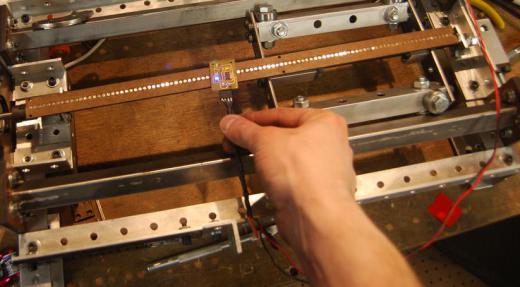A position transducer is an electronic device most commonly used as a sensory mechanism to tell a mechanical machine when to function in the manner it’s designed to. It is usually implemented in automated processes. There are a few different types of position transducers available for different uses.
The main function of the position transducer is to sense the movement or the location of a certain part within a mechanical device and process the information it receives. It then turns the information into a voltage or current signal that either powers or cuts the power being delivered to the power source for the mechanism. If the part is in a certain spot or at a certain pressure, the transducer sends a signal to the mechanism’s power source. This, in turn either engages or disengages the mechanical function of the apparatus the transducer has been applied to.

There are a few different types of position transducers, each with its own name according to its main function. For instance, encoders are the type of position transducer used in applications where the information being gathered is encoded and turned into a power or voltage signal. These types of position transducers are the most commonly used in non-contact applications. This means they typically utilize a digital diode that gathers information through a stimulant, such as light, allowing the transducer to create an output signal any time the diode is engaged.
Another type of position transducer is called an inductive sensor, which is another form of non-contact sensor. These types of position transducers gather information from the magnetic field created by a coil within an electrical device or element. When the coil has voltage or power signal applied to it, a natural magnetic field is generated. Whenever the device comes within a close proximity of a conductive substance, the inductive sensor monitors any change in the amount of field force generated by the coil.
Most of these types of sensors and transducers are used in fluid power applications as a means of monitoring the amount of displacement that happens within a fluid-powered mechanism. The inductive sensor is more typically used in large transformer circuits, as the coils that create magnetic fields often incur impedance from outside conductive elements. In such cases, the transducer allows the circuit to compensate for the change in the generated magnetic field.
